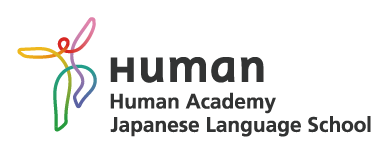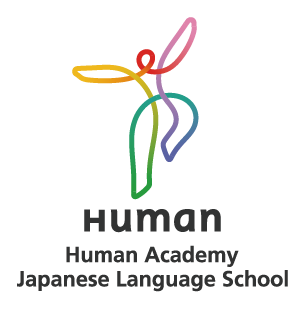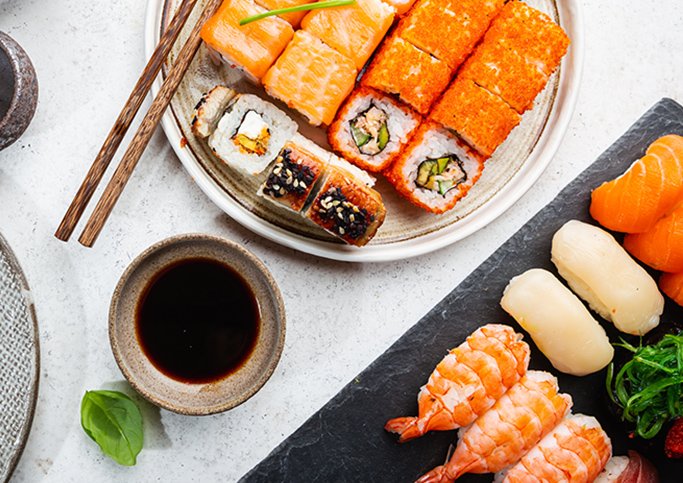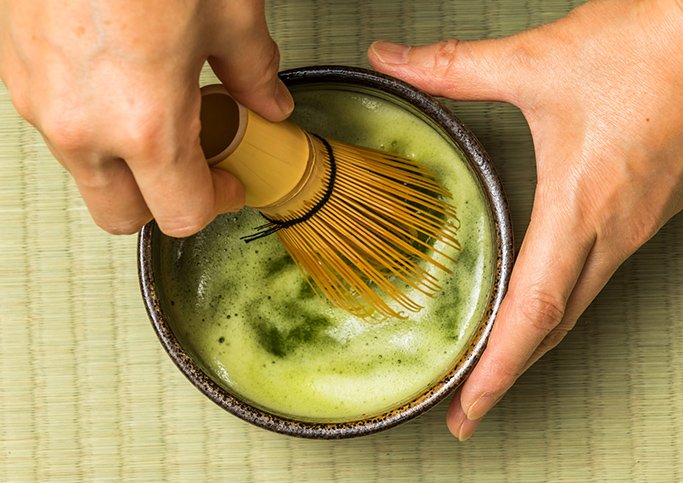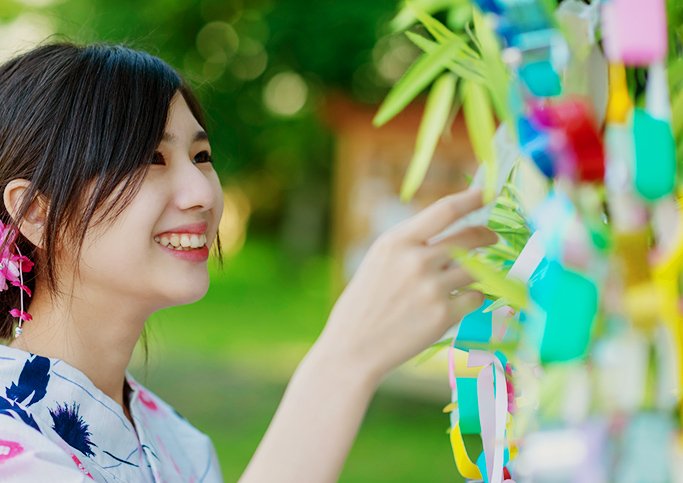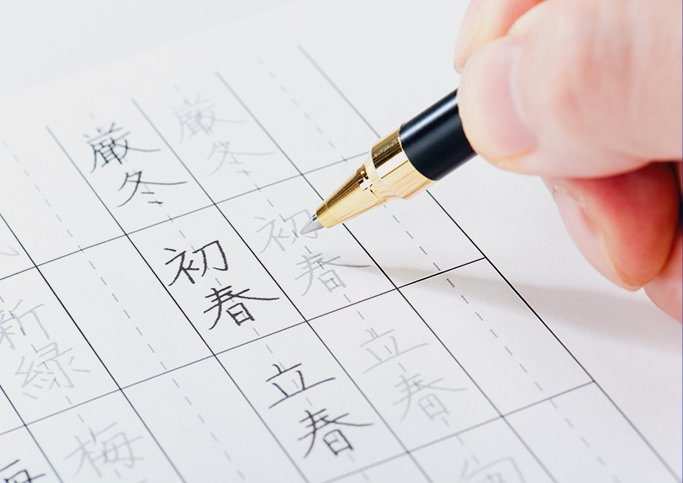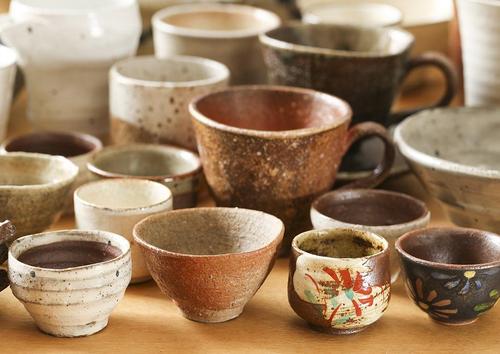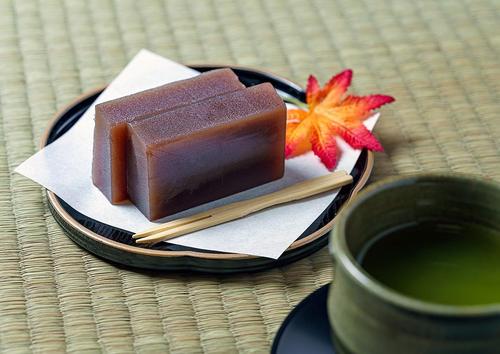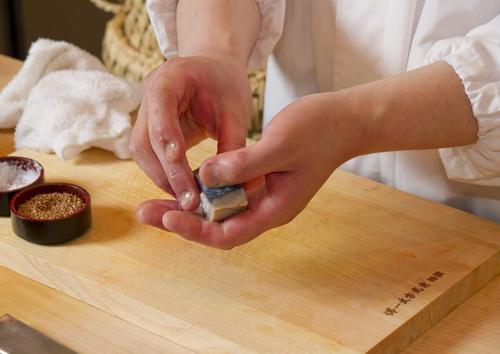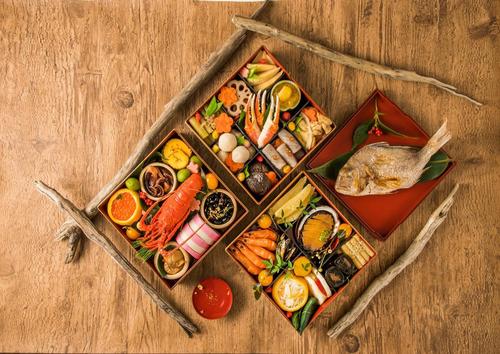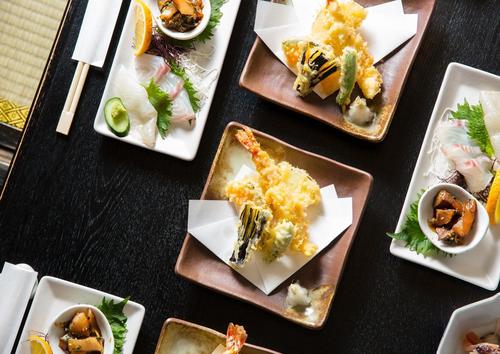
meal
itadakimasu / gochisōsama / oishī… Words and expressions used when eating in Japanese
7/ 9/2021
In Japan, there is a custom to use greeting phrases during meals. There are many words and expressions about meals. Let's check out some example sentences and practice how to use them and in what situations.
1. いただきます (itadakimasu)
“いただきます” (itadakimasu) is a greeting before a meal. Some people say “いただきます” (itadakimasu) with both palms together. By saying “いただきます” (itadakimasu) just before eating, we express our gratitude for being able to eat and for the person who prepared the meal.
Example
おいしそう!いただきます。
Oishi-sō! Itadakimasu.
It looks delicious! Thank you.
Example
いい匂い!いただきます。
Ī nioi! Itadakimasu.
It smells good!Let’s eat.
2. ごちそうさま (gochisōsama)
The phrase “ごちそうさま” (gochisōsama) is a greeting when you finish eating a meal. When you say “ごちそうさま” (gochisōsama), you show your appreciation for the meal.
Example
ごちそうさまでした。
Gochisōsama deshita.
Thank you for the meal.
Example
ごちそうさま!おいしかったです。
Gochisōsama! Oishikatta desu.
Thank you for the meal. It was so good.
3. ごちそうさん (gochisōsan)
The phrase “ごちそうさん” (gochisōsan) is more casual than “ごちそうさま” (gochisōsama). It is used by older men to address family members and inferiors. Women rarely use it.
Example
ごちそうさん、うまかったよ。
Gochisōsan, umakatta yo.
Thanks for the meal. It was awesome.
Example
ごちそうさん、腹いっぱいだ.
Gochisōsan, haraippai da.
Thanks for the dish. I'm full.
Example
ごちそうさん、また来るね。
Gochisōsan, mata kuru ne.
I enjoyed the food. I'll come again.
4. おいしい (oishī)
The word “おいしい” (oishī) is a way of saying that a food or drink tastes good or that you like it. It is used by children, the elderly, men and women. In kanji, the word is written as “美味しい” (oishī).
Example
とてもおいしいです。
Totemo oishī desu.
Very tasty.
Example
すごくおいしいです。
Sugoku oishī desu.
It's really delicious.
Example
おいしい!これ大好きです。
Oishī! Kore daisuki desu.
Amazing! I love this.
5. うまい (umai)
The word “うまい” (umai) is a casual expression of “おいしい” (oishī). It is not an elegant way of saying “うまい” (umai), so it is better to use it in a close relationship, such as between friends, to convey that something is delicious.
Example
これはうまい!
Kore wa umai!
This tastes amazing!
Example
本当にうまい!
Hontōni umai!
So good!
Example
とてもうまい料理だ。
Totemo umai ryōri da.
It's very delicious cuisine.
6. ほっぺたが落ちそう (hoppeta ga ochi-sō)
The phrase “ほっぺたが落ちそう” (hoppeta ga ochi-sō) is a Japanese expression that emphasizes the fact that something tastes so good that your cheeks fall off. The word “ほっぺた” (hoppeta) refers to the cheeks. It is said to be derived from the idea of stuffing so much food into the mouth that the cheeks almost fall off because it tastes amazing.
Example
おいしくて、ほっぺたが落ちそうです。
Oishikute, hoppeta ga ochi-sō desu.
This meal is finger licking good!
Example
ほっぺたが落ちそうな味です。
Hoppe ga ochi-sōna aji desu.
I am in love with the dish!
Example
このケーキおいしい!ほっぺたが落ちそう!
Kono kēki oishī! Hoppeta ga ochi-sō!
This cake is absolutely to die for!
7. お腹いっぱい (onaka-ippai)
The phrase “お腹いっぱい” (onaka-ippai) is used to describe the state of being satisfied with a meal or drink. It contains feelings of gratitude and the meaning of “I can't eat any more.”
Example
ごちそうさまでした、お腹いっぱいです。
Gochisōsama deshita, onaka-ippai desu.
Thanks for the meal. I'm full.
Example
お腹いっぱいです。もう食べられません。
Onaka-ippai desu. Mō taberaremasen.
I'm stuffed. I can't eat anymore.
Example
お腹いっぱい食べてください。
Onaka ippai tabete kudasai.
Please eat as much as you like.
8. おなかが空いた (onaka ga suita)
To show that you have an appetite, you can say “おなかが空いた” (onaka ga suita). There are other expressions to show that you are hungry, such as “おなかが減る” (onaka ga heru) and “腹ぺこ” (harapeko).
Example
おなかが空いて、倒れそうです。
Onaka ga suite, taoresō desu.
I'm hungry and I'm about to faint.
Example
おなかが減りました。食事にしましょう。
Onaka ga herimashita. Shokuji ni shimashou.
I'm hungry. Let's have a meal.
Example
腹ペコなので、何か食べものをください。
Harapeko nanode, nanika tabemono wo kudasai.
I'm starving, so please give me something to eat.
[日本のことが気になる?一緒に日本語を学びませんか?]
9. おかわり (okawari)
The word “おかわり” (okawari) refers to receiving the same drink or food, or the food given to you. When eating, you may have another bowl of white rice, another cup of coffee or tea.
Example
おかわりをください。
Okawari wo kudasai.
Please give me a refill.
Example
ごはんは、おかわりできますか?
Gohan wa, okawari dekimasu ka?
Can I get some more rice?
Example
コーヒーのおかわりをお願いします。
Kōhī no okawari wo onegaishimasu.
I'd like another cup of coffee.
10. ~ごはん (~gohan)
The word “~ごはん” (~gohan) is used to refer to a meal. Depending on the time of day, breakfast is called “朝ごはん” (asa gohan), lunch is called “昼ごはん” (hiru gohan), and dinner is called “夕ごはん” (yū gohan) or “晩ごはん” (ban gohan). Note that “ごはん” (gohan) can be used to mean either a meal or white rice.
Example
朝ごはんは、みそ汁を飲みます。
Asa gohan wa, misoshiru wo nomimasu.
For breakfast, I drink miso soup.
Example
12時です、昼ごはんを食べましょう。
12-ji desu, hiru gohan wo tabemashou.
It's 12 o'clock, let's have lunch.
Example
夕ごはんは、何を食べますか?
Yū gohan wa, nani wo tabemasu ka?
What do you eat for dinner?
11. ~食 (~shoku)
The word “~食” (~shoku) is used in the same sense as “~ごはん” (gohan). Breakfast is called “朝食” (chōshoku), lunch is called “昼食” (chūshoku), dinner is called “夕食” (yūshoku), snacks are called “間食” (kanshoku), and a light meal after dinner is called “夜食” (yashoku).
Example
朝食は、8時からです。
Chōshoku wa, 8-ji kara desu.
Breakfast is from 8 o'clock.
Example
昼食のメニューは、焼肉です。
Chūshoku no menyū wa, yakiniku desu.
The lunch menu is grilled meat.
Example
夕食は、魚が食べたい。
Yūshoku wa, sakana ga tabetai.
I want to eat fish for dinner.
Example
間食は、やめてください。
Kanshoku wa, yamete kudasai.
Please stop snacking.
Example
今日の夜食は、おにぎりが食べたい。
Kyō no yashoku wa, onigiri ga tabetai.
I want to eat rice balls for a late-night snack today.
12. おやつ (oyatsu)
The word “おやつ” (oyatsu) refers to the afternoon snack. During the “おやつ” (oyatsu) time, people mainly eat sweets. The word “おやつ” (oyatsu) also means sweets. In Japan, it has been a custom to eat “おやつ” (oyatsu) at 3:00 pm.
Example
おやつがたべたい。
Oyatsu ga tabetai.
I want to eat a snack.
Example
おやつの時間は、午後3時です。
Oyatsu no jikan wa, gogo 3-ji desu.
The snack time is 3:00 pm.
Example
今日のおやつは、ポテトチップスです。
Kyō no oyatsu wa, potetochippusu desu.
Today's snack is potato chips.
13. モーニング (mōningu)
The word “モーニング” (mōningu) refers to breakfast service in restaurants. The word is derived from the English word “morning.” In most cases, breakfast at home is not called “モーニング” (mōningu). Breakfast in Japan is often a simple meal.
Example
モーニングを食べましょう。
Mōningu wo tabemashou.
Let's eat breakfast.
Example
モーニングは、パンとコーヒーと目玉焼きです。
Mōningu wa, pan to kōhī to medamayaki desu.
Breakfast is bread, coffee and a fried egg.
14. ランチ (ranchi)
The word “ランチ” (ranchi) refers to lunch. The word is derived from the English word “lunch.”
Example
今は、ランチの時間です。
Ima wa, ranchi no jikan desu.
It's lunch time now.
Example
ランチは、パスタを食べます。
Ranchi wa, pasuta wo tabemasu.
For lunch, I eat pasta.
Example
一緒にランチしませんか?
Issho ni ranchi shimasen ka?
Would you like to have lunch with me?
15. ディナー (dinā)
The word “ディナー” (dinā) refers to dinner. Dinner in Japan is often the most sumptuous meal of the day.
Example
私とディナーしませんか。
Watashi to dinā shimasen ka.
Would you like to have dinner with me?
Example
今日のディナーは、フランス料理です。
Kyō no dinā wa, furansu ryōri desu.
Today's dinner is French cuisine.
Example
ディナーは、予約しましたか?
Dinā ha, yoyaku shimashita ka?
Did you make a reservation for dinner?
16. デザート (dezāto)
“デザート” (dezāto) are fruits and sweet treats that are eaten after a meal.
Example
デザートはいかがですか?
Dezāto wa ikagadesu ka.
How about some dessert?
Example
食後のデザートは、プリンです。
Shokugo no dezāto wa, purin desu.
The dessert after the meal is pudding.
Example
デザートは、何がいいですか?
Dezāto wa, nani ga īdesu ka?
What would you like for dessert?
There are many Japanese words that can be used to describe meals. Let's practice to use appropriate Japanese considering the situation and the partner. In addition, it might be good to know the names of Japanese unique dishes. For example, do you know what “天ぷら” (tenpura), “寿司” (sushi), and “たこ焼き” (takoyaki) are?
If you are interested in the Japanese language, why don't you sign up for a free membership to Human Academy Japanese Language School Plus. You can experience practical Japanese lessons by experienced teachers for free.
CATEGORIES
FEATURED TAGS
RECOMMENDATION
-
 報BUSINESS TERMS
報BUSINESS TERMSWhat is ”Ho-Ren-So”, one of the basic manners when working in Japan?
10/30/2020
-
 伝WORDS & GRAMMAR
伝WORDS & GRAMMARWhat is easy Japanese?
10/30/2020
-
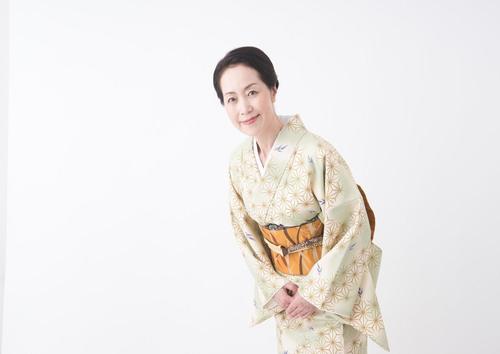 礼MANNERS
礼MANNERSJapanese greeting customs and origins. What are the greetings from other countries?
10/30/2020
-
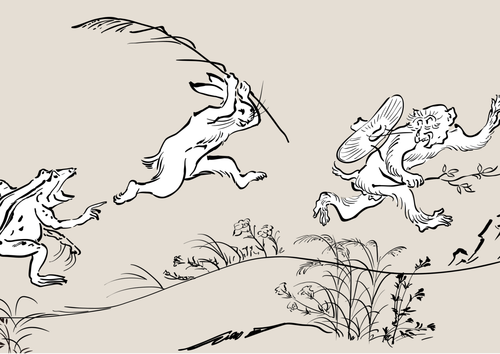 戯COMIC & GAME
戯COMIC & GAMEThe roots of animation and manga? Introducing bird and beast caricatures
10/30/2020
-
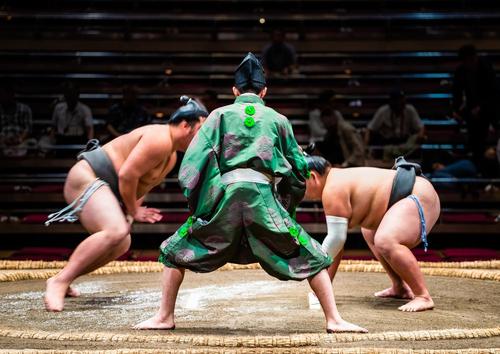 戦SPORTS
戦SPORTSThe history of sumo goes back to the mythical world! ?? Transition from myth to modern times
10/30/2020
LET’S PLAY
KARUTA!
Do you know the meaning of this...
NEXT...
FURTHER EXPLORATION
INTERESTED
IN JAPAN?
WHY DON’T YOU
LEARN JAPANESE WITH US?
START LEARNING
JAPANESE
WITH HUMAN ACADEMY!
ONE OF
THE MOST POPULAR
JAPANESE
LANGUAGE SCHOOLS
JAPANESE
LANGUAGE SCHOOL
OFFERING EXCELLENT
DETAILED LESSONS

ONLINE SCHOOL
- Learn with your classmates from all over the world
- Variety of Courses for All Needs
- FREE Trial Lesson available

TOKYO, OSAKA
- Offer the Best Curriculum for You
- Make New Japanese Learning Friends
- Many Opportunities to Practice Japanese
MAKE FURTHER
STEPS
WITH HUMAN ACADEMY!
ONE OF
THE MOST POPULAR
JAPANESE
LANGUAGE SCHOOLS
JAPANESE
LANGUAGE SCHOOL
PRODUCING MANY
JLPT N1 CERTIFIED
STUDENTS!

ONLINE SCHOOL
- Learn with your classmates from all over the world
- Variety of Courses for All Needs
- FREE Trial Lesson available

TOKYO, OSAKA
- Support Your Higher Goal of Japanese Learning
- Perfect Environment for Japanese Learners
- Learn with Your New Japanese Study Mates

